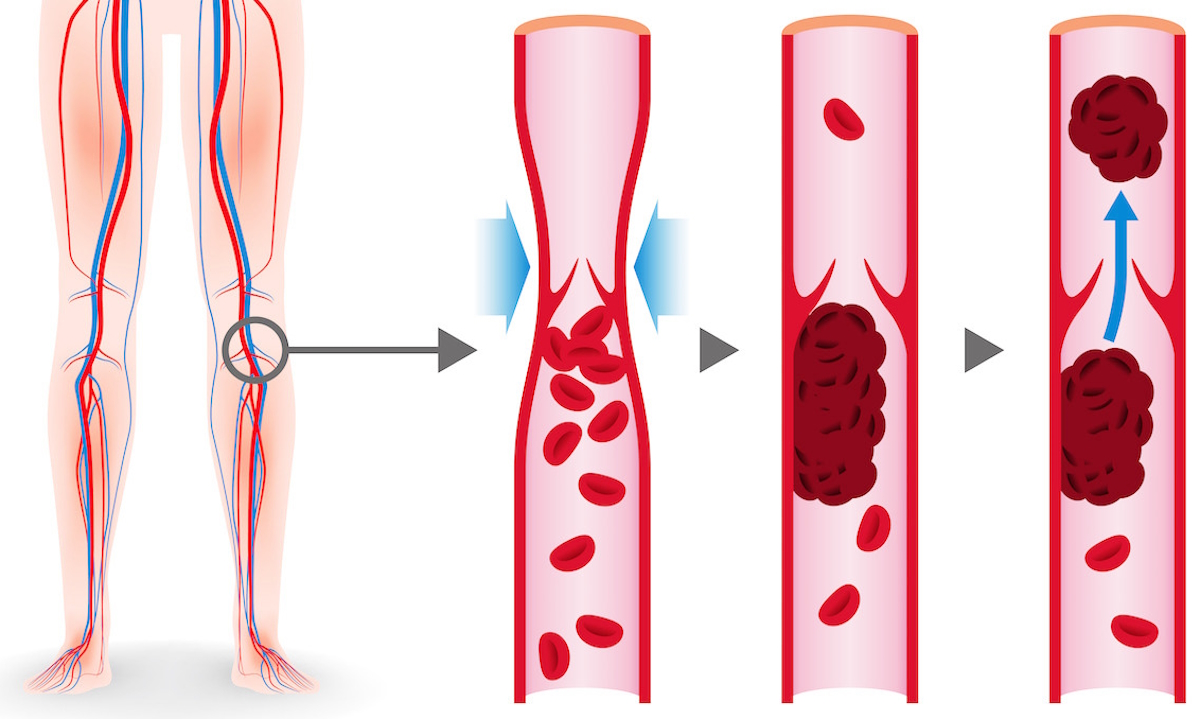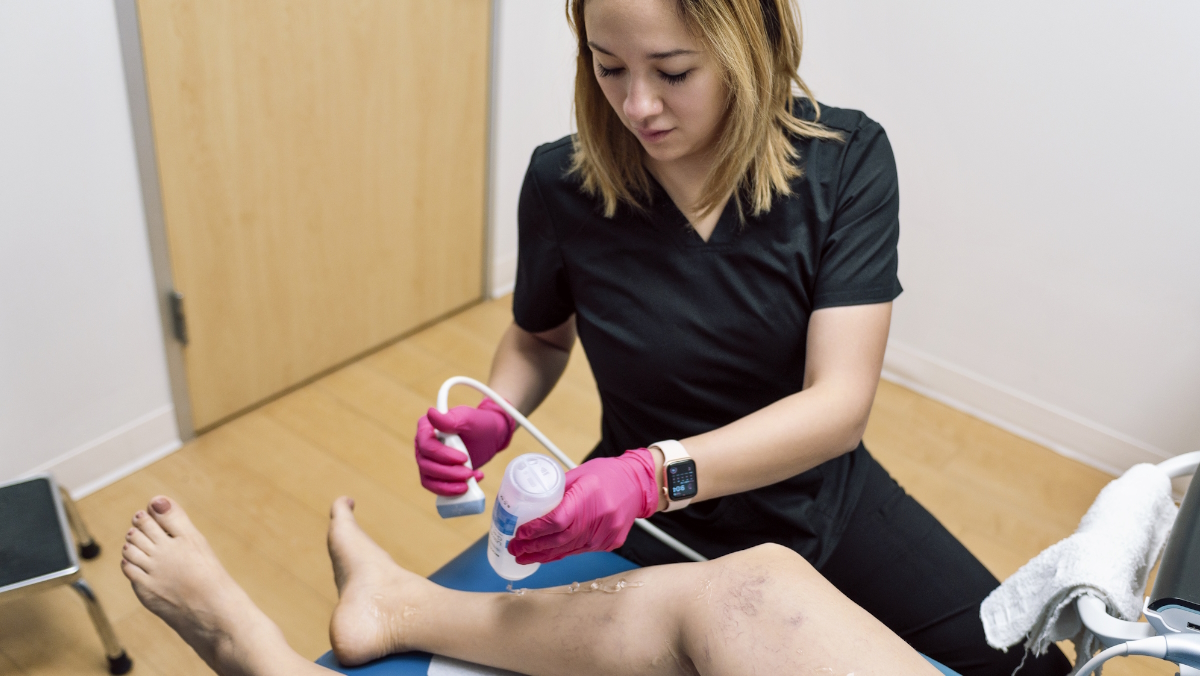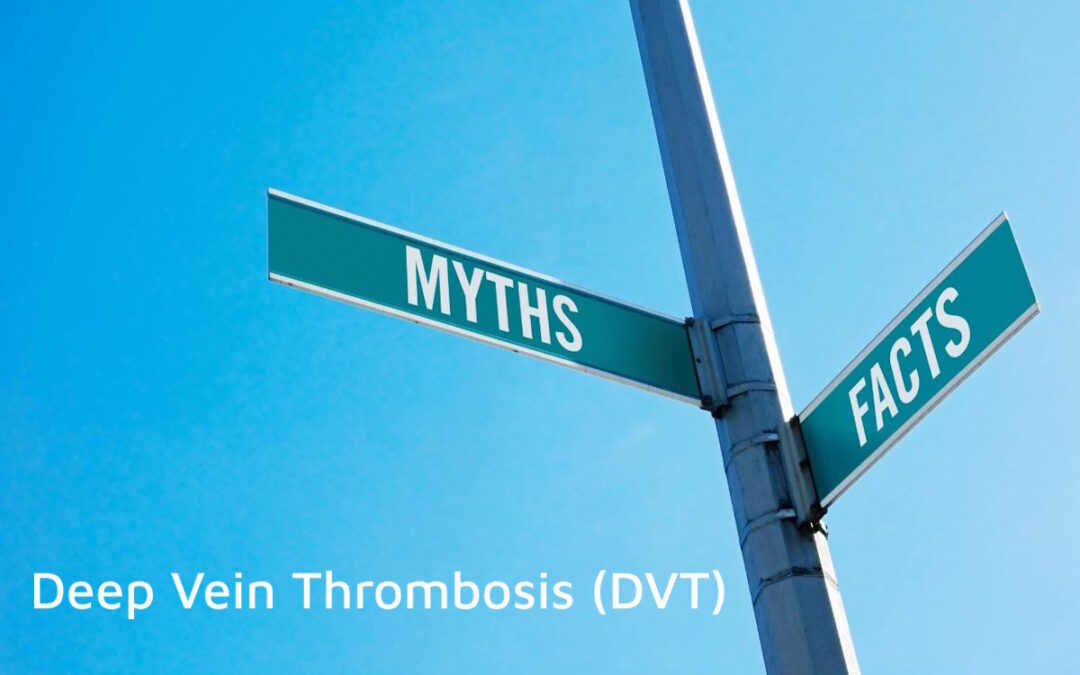Deep vein thrombosis (DVT), also known as blood clots, is a vein disease that isn’t discussed enough despite affecting the lives of up to 600,000 people in the United States each year. This includes its risks, signs and symptoms, and life-saving prevention tips and information. We say this because while DVT is treatable, ignoring even the smallest symptoms can quickly escalate to a matter of life or death for you or a loved one. Not to mention, there are many deep vein thrombosis myths being spread, many of which keep good people from seeking help sooner rather than later.
At Hamilton Vascular, we believe it’s important for people to know the difference between fact and misinformation. Properly diagnosing blood clots allows us to recognize vein disease at all stages and dramatically improve our patient’s quality of life. We want to empower our patients to make informed decisions about their vascular health. This is especially true for DVT, as many people who have it are often misdiagnosed and mistake symptoms for something else.
Are you concerned about whether or not you might have deep vein thrombosis? Schedule a consultation with Hamilton Vascular’s expert physicians. Appointment
What Is Deep Vein Thrombosis, Exactly?
Up to 100,000 people die each year from blood clots in the deep large veins of the pelvis, legs, thighs, or arms. When blood clots form where they aren’t supposed to inside a vein or artery, blood can’t flow past the clot, causing an immediate decrease in blood circulation. If left undiagnosed and untreated, blood clots can result in strokes, pulmonary embolism, heart attacks, and death.

Deep vein thrombosis can lead to a variety of symptoms, including:
- Leg and foot pain, similar to a charley horse
- Burning sensations in the feet
- Reddish or bluish skin discoloration
- Legs and feet that are warm to the touch
- Faster than normal or irregular heartbeat
- Fainting or passing out
- Unexplained cough or coughing up blood
Various risk factors contribute to deep vein thrombosis, including sedentary lifestyles, medications, smoking, inherited blood clot disorders, and even surgeries or illnesses that limit your ability to get up and move around.
Are you experiencing leg pain that’s interrupting your quality of life? Schedule a consultation with Hamilton Vascular’s expert physicians. Appointment
Fact or Fiction: Debunking 7 Deep Vein Thrombosis Myths
Myth #1: I am in great physical shape, so I don’t need to worry about DVT
Deep vein thrombosis can affect anyone at any age, and being an athlete or in great physical shape doesn’t make you immune. Several circumstances that put an athlete at risk for DVT include dehydration, which causes blood to thicken, and traveling long distances to and from games. Significant trauma, pregnancy, surgery, and family history are also factors that could cause an otherwise healthy individual to develop blood clots.
Myth #2: Women are at greater risk for deep vein thrombosis
Not true. While pregnant women or some women who take oral contraceptives have an increased risk for blood clots during that time in their life, suggesting they are the more at-risk sex is simply not true. In fact, men have a statistically greater occurrence of DVT and pulmonary embolisms. Also, men are reportedly more likely to develop vein diseases such as deep vein thrombosis because they typically don’t seek treatment immediately.

Myth #3: Birth control medications will give me DVT
Several studies show an increased risk of blood clots in women who take oral contraceptives due to the increased levels of estrogen in those contraceptives. But according to the American Society of Hematology, the vast majority of women who take these medications won’t have any complications. Women who are obese, smoke, and over 40 who use oral contraceptives have a higher risk of developing clots.
Myth #4: Varicose veins do not increase the risk of DVT
Varicose veins are more than just a cosmetic concern. These bulging, twisted veins only get worse with time, and as they do, healthy blood flow throughout your extremities can be severely reduced. As a result, the risk of deep vein thrombosis increases dramatically.
Myth #5: The most common place to develop a blood clot is during travel
It’s easy to believe this myth because long-distance traveling, either by plane or car, requires a person to sit in a cramped position for longer periods. As a result, blood flow is impeded and can lead to blood clots. The reality is that one of the more common places for blood clots to occur is in hospitals due to surgery or immobility.

Myth #6: DVT always has symptoms
DVT can cause a variety of telltale symptoms ranging from swelling in the legs and feet to skin discoloration, shortness of breath, and chest pain. But what’s really scary is that it could cause no pain at all until it’s too late. According to the Centers for Disease Control and Prevention, about half of people with DVT have no symptoms at all.
Myth #7: The only treatment for DVT is invasive surgery
Another deep vein thrombosis myth is that invasive surgery is the only answer. In reality, DVT can be successfully treated with blood-thinning medications when caught early. Lifestyle changes include quitting smoking, maintaining a healthy weight, dieting, and exercising.
The first step is to, of course, identify if blood clots do exist. At Hamilton Vascular, we employ two forms of diagnostic tests.
- Diagnostic Venous Ultrasound — Uses sound waves to view the circulatory system and structures of the veins underneath the skin to search for blood clots (DVT). It is typically the first exploratory option, and the process takes 45-60 minutes to complete, and there is no cutting, scarring, or anesthesia. You can return to your normal daily activities immediately after the procedure, including work.
- Venography — This test can uncover problems with veins that venous ultrasound cannot view. With venography, a doctor will inject an iodine-based solution into the veins to act as a contrast that can be seen easily on an X-ray. You may experience some mild bruising and tenderness, but this is normal.

Vein specialists like the experts here at Hamilton Vascular understand that deep vein thrombosis is a concern for many patients. While we don’t treat deep vein thrombosis, we are routinely called upon to expertly diagnose this condition and coordinate a team approach for a customized treatment plan.
Let Hamilton Vascular Treat What’s Causing Your Deep Vein Thrombosis
Are you worried that your symptoms could be a sign of a more serious health condition such as deep vein thrombosis? Hamilton Vascular can help. A consultation with your doctor can determine the type, severity, and location of your particular vein problem. If a diagnostic venous ultrasound doesn’t provide a clear enough picture, a venogram can uncover additional findings. The key is not to delay seeking help.
Over the years, our practice has grown significantly and has expanded the specialty team to include vascular surgeons and vein specialists at multiple South Texas locations. This keeps us on the cutting edge of medicine, helping patients avoid traditionally long invasive surgeries used in the past to treat lower-extremity vascular disease. Patients are helped to feel comfortable while procedures take place at in-office or outpatient settings.
Procedures take place in outpatient or in-office settings. These minimally invasive procedures help patients with a wide range of vascular conditions, such as venous insufficiency, varicose veins, spider veins, diabetic vascular disease, venous ulcers, peripheral artery disease, leg discoloration, lymphedema, restless legs syndrome, and more.
Please contact us at 866-552-4866 or complete the appointment form to schedule a consultation. We are here to help, all while providing compassionate patient care.
AppointmentThis information is not a substitute for professional medical advice. Prior to starting any new treatment or questions regarding a medical condition, always seek the advice of your doctor or other qualified health provider.
Hamilton Vascular serves the South Texas area including Houston, San Antonio, Austin, Round Rock, Bastrop, Brushy Creek, Cedar Park, Converse, Georgetown, Hutto, Kyle, Leander, Marble Falls, New Braunfels, Pasadena, Pearland, Pflugerville, San Marcos, Schertz, Houston, Sugar Land, Katy, Webster, Bay City, Clear Lake, Lake Jackson, The Woodlands, Universal City, Spring, Kingwood, Stafford, Conroe, Texas City, Cypress, League City, Bellaire, and more.
*Patient stories are true. Names and/or photos may be changed to protect patient confidentiality.

